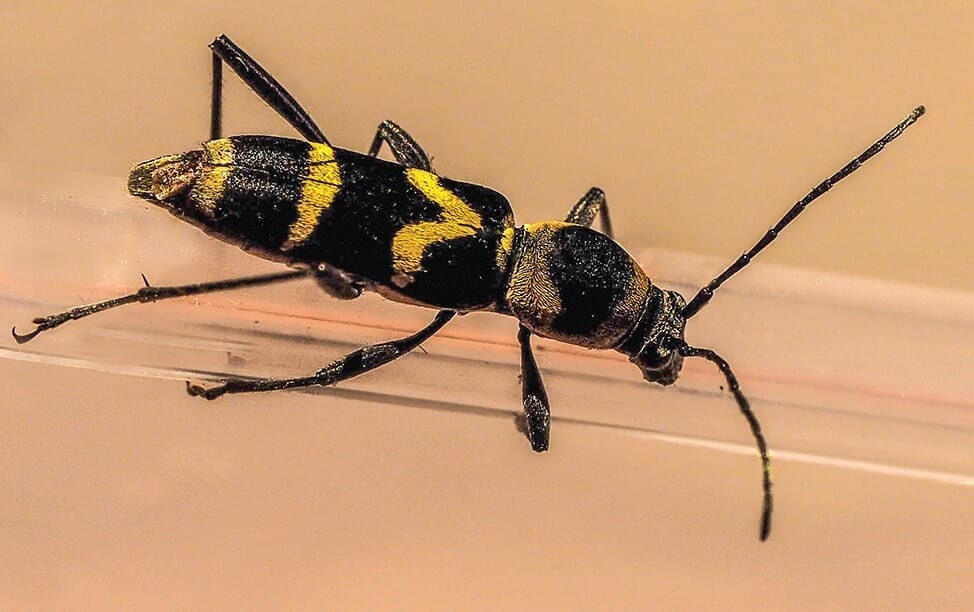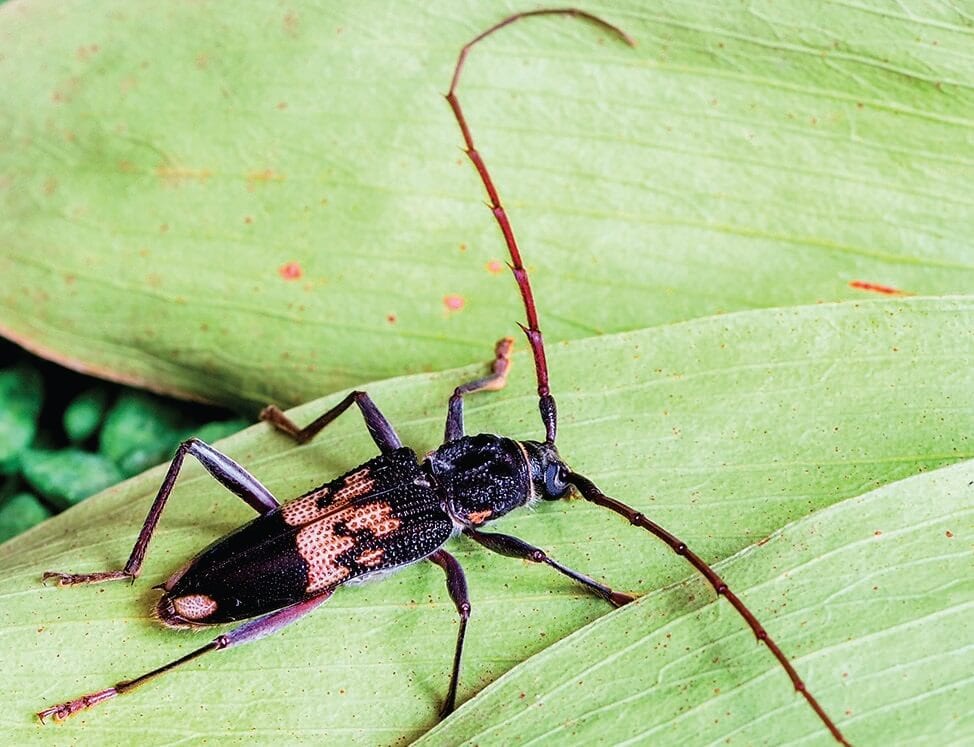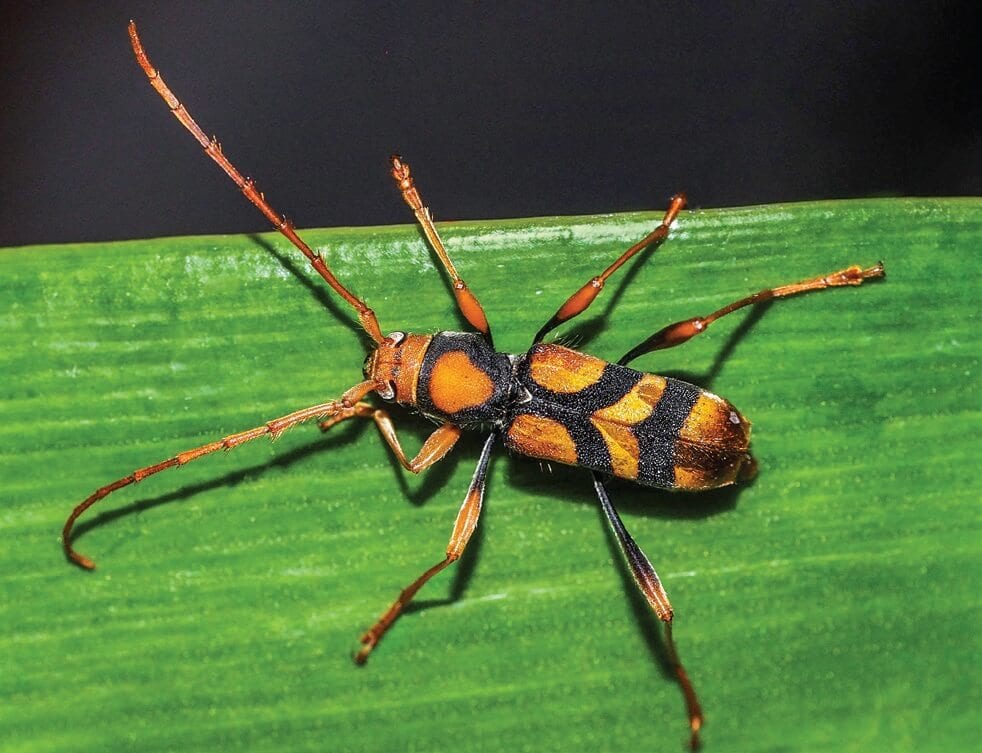Tags: Australian Native Wildlife. Beetles
Longicorn or Longhorn Beetles are a large family of wood-boring beetles with about 1250 species in Australia and 26 000 worldwide. They are easy to identify as they have particularly long antennae which are mostly longer than their body length. Their long bodies range from varying lengths and can be up to 80 mm long. Antennae are partly surrounded by their compound, mostly kidney-shaped eyes.
Larvae are fat, cream grubs between 20-40mm long with a rusty coloured head and prominent mandibles designed to chew into wood. Witchetty grubs are the larvae of several species of Longicorn Beetles and are high in protein, very nutritious and I believe have a pleasant nutty taste. Longicorn Beetles lay their eggs mostly under bark of their particular host tree which is either dead or dying.

Chloroporus curtisi
Larvae are mostly wood borers and feed on the wood of these trees. During their long development the larvae grow to a large size and can demolish the whole inside of a tree trunk. Larvae keep chewing for their whole lives and stop only when it is time to pupate. The frass or excrement is used to seal up the chamber and when the adult is ready to emerge it bores through the bark leaving a hole about 6 mm in width. Most of their life is spent in the larvae and pupa stages with adults only living for around 30 days.

Eucalyptus Longhorned Borer
Life cycles can take up to 2-4 years but in tropical areas the life span is much shorter. Many of the Longicorn species feed on wood while others eat pollen, sap or leaves. Pollen eaters are important in the pollination of their preferred flowering trees while others play an important part in the decomposition of dead wood. I have managed to photograph three Longicorn species on Bribie Island. Common Eucalypt Longicorn Phoracantha semipunctata – Adults are energetic fliers.
One flew through my window, presumably from the Gum Trees across the road. This species is considered a major pest in Eucalypt Plantations as the larvae feed on the eucalyptus wood. They have a life cycle of 2-3 years. Tiger Longicorns Aridaeus thoracicus are wasp mimicking beetles about 20mm in length. They resemble wasps and act like wasps to fool predators likely to attack.

Tiger Longicorn Beetle
Their preferred food is pollen on some flowering native plants particularly belonging to the Myrtle family. Host trees are Eucalyptus, Laurel, Leptospermum and Mangroves. Chloroporus curtisi are attractive black and yellow Longicorns with the adults feeding on pollen from several native trees commonly found in heathlands, woodlands and dry forests. They are also wasp mimicking beetles.
Acacia trees are the host trees for the larvae. Not much is known about this species and I have not been able to find a common name. In China Longicorn Beetles are often called “Sky Cow” beetles as their faces are similar to a cow when looked at from the front.
